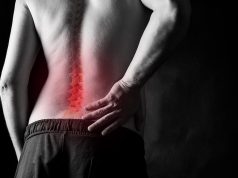The North American Spine Society 31st Annual Meeting
The annual meeting of the North American Spine Society was held from Oct. 26 to 29 in Boston and attracted approximately 5,000 participants from around the world, including orthopedic surgery, neurosurgery, neurology, radiology, and anesthesiology specialists, as well as researchers, physical therapy specialists, and other spine care professionals. The conference featured presentations focusing on the latest advances in medical and surgical spine care.
In one study, Federico P. Girardi, M.D., of the Hospital for Special Surgery in New York City, and colleagues measured the amount of pain improvement received among 422 lumbar surgery patients two years after surgery and compared it to the amount of pain improvement expected before surgery.
“Two years after surgery, 11 percent of patients reported no improvement in pain, 28 percent reported a little to moderate improvement, 44 percent reported a lot of improvement, and 17 percent reported complete improvement,” Girardi said. “Overall, 56 percent of patients received less improvement in pain than expected; most of these patients had expected complete improvement.”
In multivariable analysis, the investigators also noted that patients reported less pain improvement if before surgery they expected greater pain improvement, had a positive screen for depression, had a degenerative diagnosis, and if, after surgery, they required a repeat surgery and had greater back and leg pain.
During a forum on gender difference in spine care, Gregory L. Whitcomb, D.C., from the Medical College of Wisconsin in Madison, moderated a discussion on variations in spine care based on sex and gender. The presenters discussed how significant disparities exist in the health care needs of men and women.
“The National Institutes of Health has placed emphasis on a better understanding of gender specific health care in redefining guidelines for scientific studies and research funding,” Whitcomb said. “The fields of spine and musculoskeletal medicine and rehabilitation have lagged in research regarding the specific care needs of women.”
According to Whitcomb, women are at greater risk for chronic neck, low back, and pelvic pain syndromes, which pose potential long-term health and disability risks.
“Seminal research is showing significant effects in abdominal wall function following childbirth, and these effects are relatively long lasting and potentially associated with spine and pelvic pain syndromes,” Whitcomb said. “There is a significant lapse in attendance at postpartum follow-up visits (approximately 60 percent of women fail to return for these check-ups) and evidence suggests that pregnancy-related musculoskeletal effects are not routinely assessed at these evaluations.”
More Information – Page 83
In another study, David Kusin, M.D., of the University of Nebraska Medical Center in Omaha, and colleagues evaluated the effect of smoking on spinal cord healing following surgery for cervical myelopathy.
The investigators categorized 212 consecutive patients with cervical myelopathy into two groups according to smoking status; they were then stratified according to “pack years” and packs smoked per day. Patients were assessed and given a pre- and postoperative Nurick scale rating (rating used to determine difficulty with walking).
“We found that tobacco use was directly correlated with decreased postoperative improvement in Nurick score,” Kusin said in a statement. “These data suggest that patients with cervical myelopathy who smoke are likely to have less improvement in their condition postoperatively, compared to those who do not smoke, and that the effect of each cigarette is additive. These findings reinforce the importance of counseling patients about smoking cessation prior to surgery.”
Copyright © 2016 HealthDay. All rights reserved.







